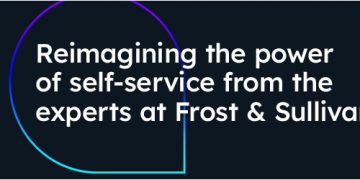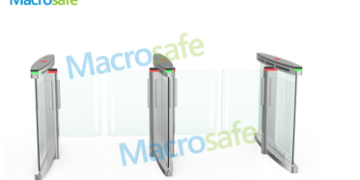Scalable cloud-based solutions are widely popular among IT pros these days. The cost, convenience, and reliability of ready-to-use software as a service make this disruptive technology a favorable choice.
Still, the market needs some convincing that backing up to the cloud is both a smart and safe thing to do, suggested Paul Evans, CEO at Redstor, a data management provider headquartered in the U.K.
Redstor boasts more than 40,000 clients globally, more than 400 partners, and more than 100 million restores a year. Last month in London, Redstor was named Hosted Cloud Vendor of the Year at the 2022 Technology Reseller Awards.
“Companies should not only say goodbye to on-premises boxes, they should celebrate because their removal lowers the risk of ransomware or the impact of a fire or flood in the data center,” Evans told TechNewsWorld.
SaaS is a software distribution model that offers considerable agility and cost-effectiveness for companies. This makes it a reliable option for numerous business models and industries. It is also popular among businesses due to its simplicity, user accessibility, security, and widespread connectivity.
According to Evans, SaaS trends continue disrupting the industry this year. Spiceworks Ziff Davis predicted that half of all workloads will be in the cloud next year.
Many organizations are doing cloud-first migration projects. Those particularly interested are hard-hit businesses seeking infrastructure through the Operational Excellence (OpEx) model and framework to avoid heavy upfront investment.
“Data will become increasingly cloud-native in the year ahead, especially with the continued growth of Kubernetes, Microsoft 365, Google Workspace, and Salesforce,” he noted.
Threat Landscape Driving Factor
Grand View Research reported recently the global managed services market, valued at US$239.71 billion in 2021, is expected to grow at a compound annual growth rate (CAGR) of 13.4 percent from this year through 2030. Many managed service providers (MSPs) are looking to become more service driven.
At the same time, value-added resellers are looking to become cloud service providers. Other distributors are trying to work out how they can best fit in, Evans observed.
“The backdrop to this is a threat landscape that has changed dramatically, especially after Russia’s invasion of Ukraine. State-sponsored malware and cyberwarfare are coming to the forefront as opposed to renegade smart criminals,” he noted.
A D V E R T I S E M E N T
U.S. President Joe Biden has emphasized the private sector must step up and lock its “digital doors” to defend critical infrastructure. Sir Jeremy Fleming, director of GCHQ — the U.K.’s intelligence, cyber, and security agency — warned the Russian regime is identifying institutions and organizations to bring down, making it just a matter of time before the attacks come.
“Threats are not only growing in scale and complexity. The range of ransomware attacks makes it abundantly clear that companies of all shapes and sizes will increasingly become targets. As a result, we will see more businesses enlisting MSPs to run their IT, cybersecurity, and compliance programs,” predicted Evans.
During our conversation, I discussed further with Evans how Redstor and other providers can bolster digital defenses.
TechNewsWorld: What is unique about Redstor technology compared to other solutions for data management and disaster recovery?
Paul Evans: Our approach focuses on businesses’ concerns around their risk posture, a lack of resources during an IT skills shortage, and profitability challenges. Redstor offers what we believe is the smartest and simplest backup platform for MSPs.
One factor is the ease involved with onboarding. With three clicks and a password, users are up and running and can scale easily. Also, it requires light support thanks to numerous data connectors and being purpose-built from the ground up for MSPs managing multiple accounts.
It’s not some Frankenstein’s monster of hastily acquired solutions that have been bolted together.
What makes Redstor’s platform smart technologically?
Evans: Whether MSPs are protecting data on-premises or in the cloud — Microsoft 365, Google Workspace, or cloud-native Kubernetes — they can do it simply and all from one app. Being able to span the on-premises cloud and SaaS worlds all from one place, rather than delving into multiple different interfaces, saves MSPs time and money.
Redstor is smart because we enable user-driven recoveries by streaming backup data on demand, so organizations have what they need to get up and running straight away in the event of data loss.
You do not have to mirror everything, copy everything, or recover everything before you can start working again. During outages, InstantData technology also brings important data back in seconds, while less critical recovery continues in the background.
The platform is also smart because it provides more than backup. You also get archiving and disaster recovery with high-level search and insight — all from one app.
Redstor is infused with AI, and our machine learning model automatically detects and isolates suspicious files in backups so they can be removed for malware-free recoveries. MSPs can do data classification with tagging. In the future, we will be introducing anomaly detection.
How do cloud-based SaaS data protection and recovery systems compare to other solutions?
Evans: Organizations think that to have a fast experience with the cloud they need multiple boxes onsite to pull the data down quickly. But on-premises Frankenstein solutions, bolted together from the technology of multiple acquisitions, are not going to handle today’s challenges.
 Redstor CEO Paul Evans
Redstor CEO Paul Evans
Further, with hardware, there can be supply-chain issues and shortages of critical components like semiconductors. Taking your data protection to the cloud eliminates both these issues and puts the responsibility squarely on the MSP.
Without cloud-based protection, you lack the best means to secure data. SaaS security is constantly updated and built upon. Free updates are delivered on a regular release cycle to keep customers ahead of risks. The MSP ensures reliable and secure connectors for multiple sources and popular applications, now and in the future.
Plus, storing backups securely in geographically separate data centers creates an air gap between live data and the backup to enhance security.
What is driving the popularity of SaaS data protection?
Evans: The foremost reason occurred during the pandemic when getting onsite became problematic. Those with data protection that involved hardware faced challenges fixing and swapping out boxes. Many organizations also do not want boxes onsite because they are hard to come by due to supply-chain issues. Also, the devices are known ransomware magnets.
SaaS overcomes these issues and more. MSPs are open to data portability requests and have enabling tools and services designed for today’s challenges. They can also fulfill services digitally and distributors appreciate the value of made-for-the-channel SaaS supplied through online marketplaces.
Most SaaS applications now stress the need for a separate backup. More people are realizing that just because you have Microsoft does not mean that you cannot be compromised. You might have an internal user who could destroy the data, or you might not have enough retentions kept. Backing up SaaS applications is now the fastest-growing part of our business.
What should an MSP look for from a vendor other than good tech support?
Evans: Technology meant for MSPs must be partner-friendly from the ground up and include deep sales and marketing support. It should offer attractive margins with clear, transparent pricing so MSPs can sell services easily.
Software should scale data protection rapidly, and by the end of the first interaction, MSPs should be able to offer a proof of concept by deploying backups and demonstrating rapid recoveries to close deals swiftly.
Vendors need to provide MSPs with the ability to buy whatever they need from one source, whether it is protection for Kubernetes environments, malware detection for backups, or data classification.
A D V E R T I S E M E N T
Also key is one interface to eliminate the complexity of switching between different solutions and consoles. Plus, having the ability to see and manage data from one interface saves valuable time.
A vendor’s platform should be designed for multi-tenancy and provide a high-level view of an MSP’s own usage and customer consumption. Also needed is a view of the type of data protected and where it resides. The vendor should also have a history of harnessing new advancements, particularly AI to detect and remove malware, data classification, and cyber-attack predictions
How should businesses assess a vendor’s suitability?
Evans: Many vendors make bold claims of having the best solution for challenges in the market. MSPs should gauge first-hand feedback from their peers and adequately field-test the solutions.
Check rankings in the G2 lists for Top 20 Backup Software, Top 20 Online Backup Software, and other user-backed reviews. Focus on reports that are based on user satisfaction and review data. For instance, Redstor ranked first place with G2.
Also look for vendors that provide a clear road map of future developments, which MSPs should be able to influence. Lastly, MSPs should focus on smart solutions that provide simplified protection.
Source by www.technewsworld.com






























